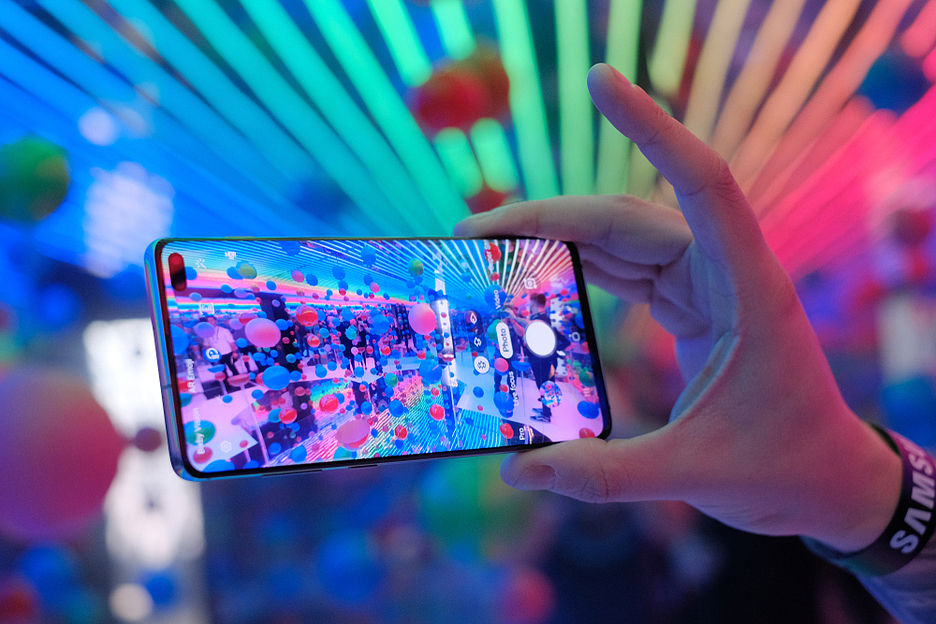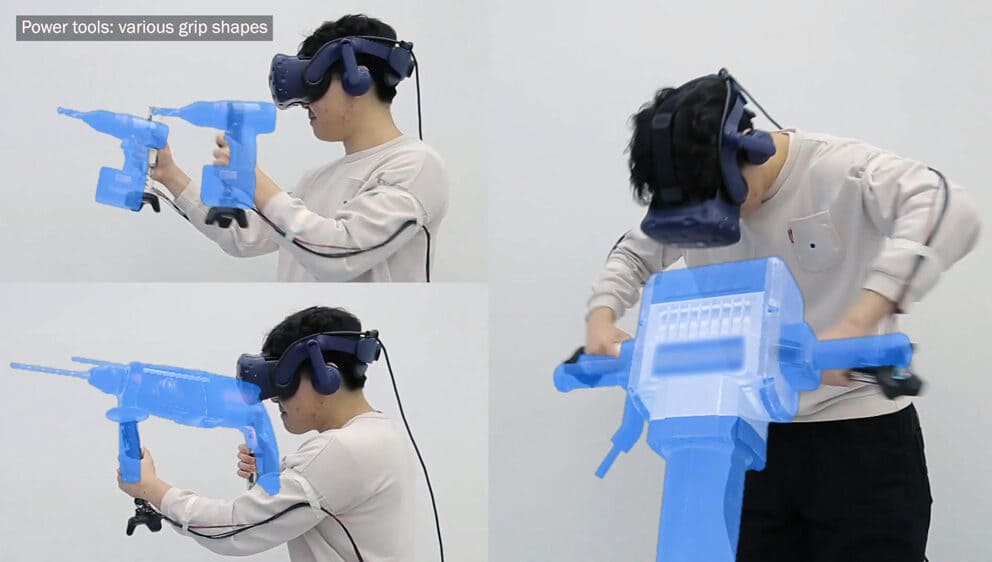
Microsoft and the Korea Advanced Institute of Science and Technology (KAIST) are demonstrating a new virtual reality controller that can simulate larger continuous virtual objects.
The researchers call the controller system “Gamesbond”, in which a continuous object can be modeled between two independently tracked virtual reality controllers. The controllers are read through additional tracking devices, such as the Vive Tracker , Tundra Tracker or Manus Tracker. Vive trackers were used for Gamesbond.
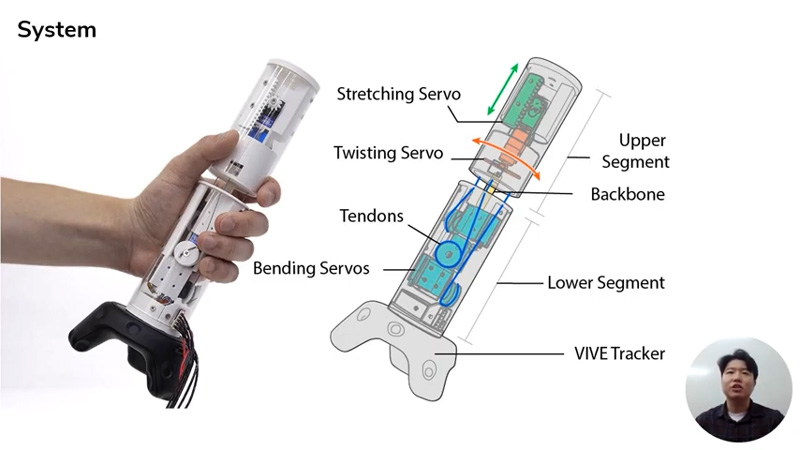
Motors and joints for rotation, extension and flexion are built into the Gamesbond rods | / Image: KAIST
VR controllers have a variety of motors and joints that, when interacting synchronously, are designed to simulate a plausible tactile sensation corresponding to the physical characteristics of virtual objects with which the owner of VR glasses interacts. The handles of the controllers can become longer and shorter, rotate and bend in all directions.
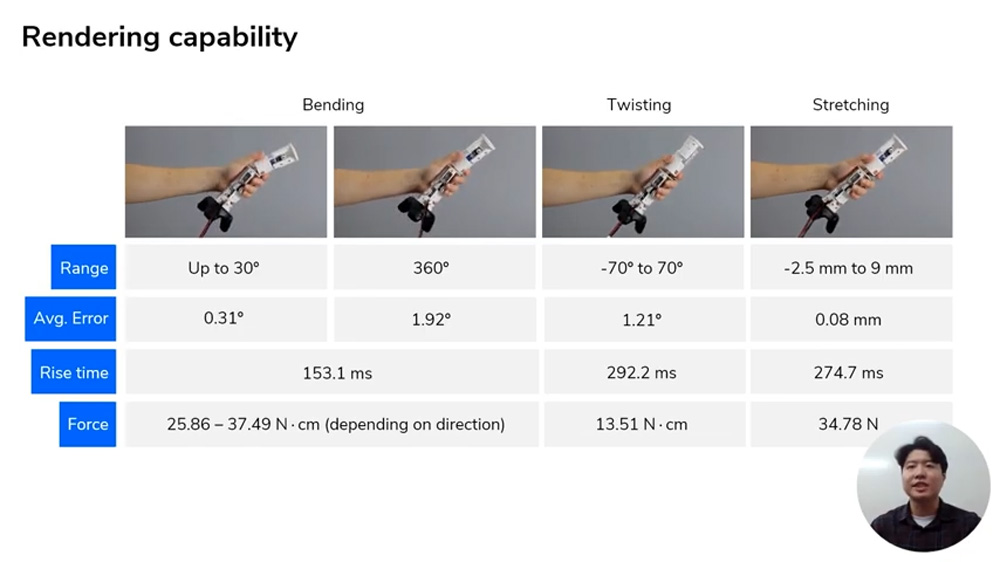
The Gamesbond handles can be moved in all directions. Together, they should be able to visualize large virtual objects held with both hands, so that they look plausible. | Image: KAIST
Jump rope or jackhammer
Thanks to the synchronous adaptation of the two controller handles, the virtual object should feel as if it was created between two VR controllers, that is, it was held with both hands — if the visual stimulus in the glasses corresponds to the sensations at the same time.
According to the researchers, Gamesbond can reliably simulate asynchronous objects, such as a fishing rod, as well as synchronously used objects, such as a jump rope or even a jackhammer. Gamesbond controllers should also be able to realistically display the feeling of a breaking object in your hands, for example, a flexible branch. Of course, only one object can be modeled tactilely on each controller, and switching between the two types of modeling occurs smoothly.
Tactile sensation improves the degree of reality and immersion
In the first test involving twelve people, the researchers compared the user’s perception of the controller with and without tactile sensations, as well as with soft, hard and dynamic virtual objects.
In all areas, Gamesbond controllers were able to significantly improve the perceived degree of reality, immersion and enjoyment of virtual reality. Tactile effects significantly improved the user’s assessment in all three areas. Twelve testers rated tactile modeling especially well for rather soft, pliable objects.
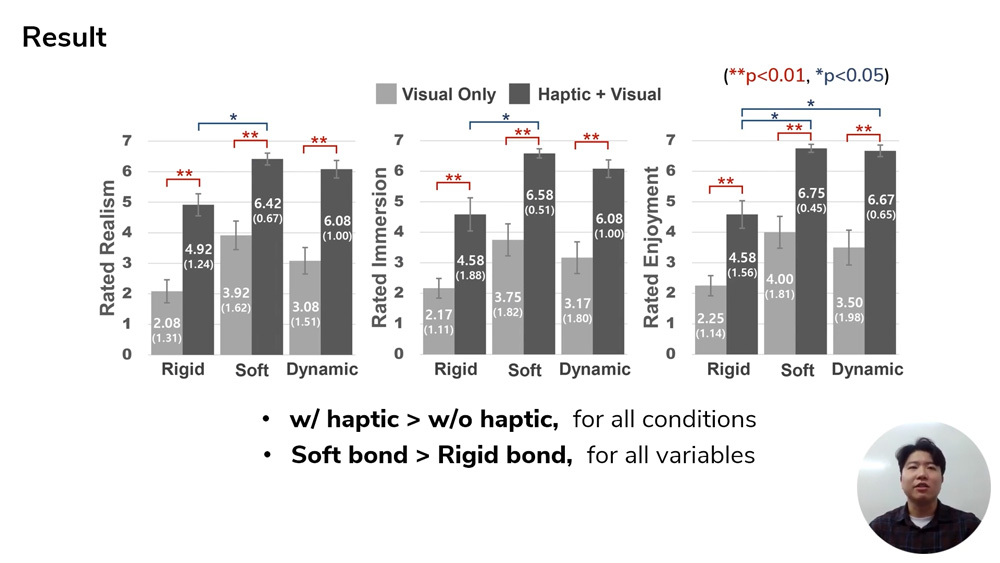
Gamesbond is especially good at modeling soft, malleable and dynamic objects, such as a rope. | Image: KAIST








